Superbly-restored 1939 Foden DG5
Posted by Chris Graham on 1st May 2020
David Reed drops in on Steve Boot, to see his superbly-restored 1939 Foden DG5; a recent returnee to the rally scene, following many years away and a second rebuild.
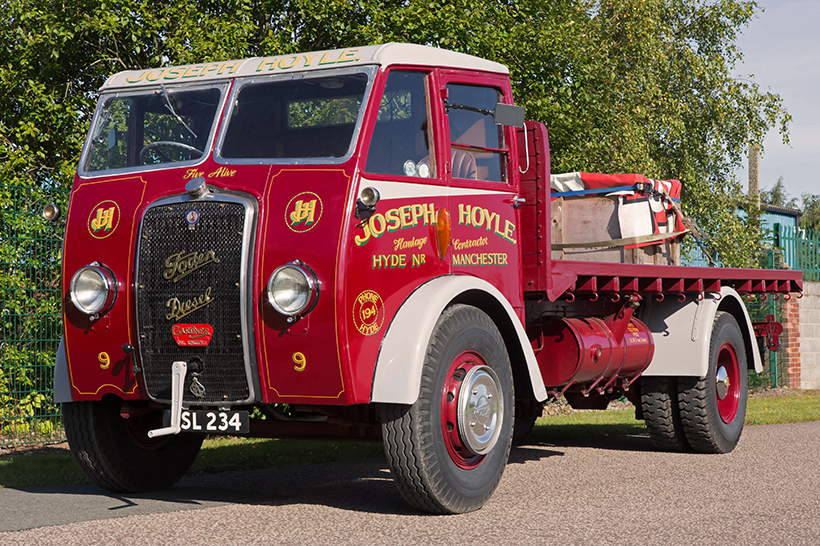
Steve Boot’s superbly-restored 1939 Foden DG5 is a vehicle that’s bound to attract plenty of attention on the rally circuit.
Steve Boot is pretty well-known on the rally scene in the Nottinghamshire area, primarily driving LTL 804P – his 1974 Atkinson Borderer. This vehicle was new to Slaters Transport of Immingham, and was used for tanker haulage work. However, it stood in the supplying dealer’s yard for about 14 months before being registered.
Having passed to Steve in March, 2001, the Borderer required some restoration work on the engine and chassis, plus a repaint, and has been on the show/rally circuit since 2002. Now, though, another and rather older lorry has joined the Borderer in Steve’s fleet; SSL 234 is a 1939 Foden DG5, which has been re-restored by Steve and his two sons, Stephan and Lewis, as well as his cousin, John Wright.
Varied working life
Registered FMB 93, the DG5 was the second of two, consecutively-registered examples that were new to Joseph Hoyle of Hyde, in Manchester, as flats. It was used on general haulage and “worked anywhere and everywhere,” Steve said. Although, this DG5 has survived, its sister vehicle – FMB 92 – wasn’t so lucky. “It caught fire on Macclesfield Road, and was never rebuilt.”
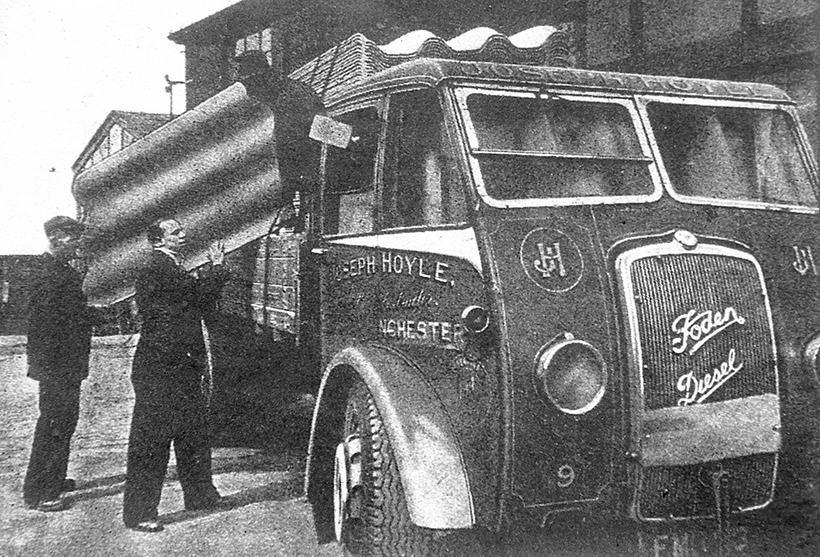
The Foden, with its original FMB 93 registration, while working for first owner, Joseph Hoyle.
However, FMB 93 stayed with Hoyle for nine years, before passing to Fletcher Millar Oils, of Manchester, in 1948, where, perhaps unsurprisingly, it carried barrels of oil. Two years later, however, it was involved in a fatal accident on Liverpool docks, when it hit a pedestrian in the road and, shortly after that, was sold.
The Foden then went into fairground service with W Cooke, of Hyde. Here it was fitted with a Luton-type body, and spent the next 29 years on the fairground circuit, until 1979. It then passed to John Wood of Bollington, who refurbished it as a flat again, and carried out a lot of restoration work. “It was in the livery of Wood & Gardiner, and rallied for a time before it passed to Keith Shorrocks of Bolton, in 1994, then on to Gordon Laidlaw,” Steve explained.

On the fairgrounds, while working for W Cooke of Hyde and with a Luton-type body.
Rally appearances continued until around 2000, when the DG5 was ‘exported’ to County Cork, in Ireland. Before this happened, though, the FMB 93 registration which, of course, couldn’t be used in Ireland and which the vendor presumed would otherwise be lost anyway, was taken off, and now lives on a small, 2019 Suzuki.
Once in the Irish Republic, the Foden was dismantled, with the engine being removed and overhauled. It then remained in this condition for some time, until the chassis cab and removed engine returned to the UK. John Boughey, of C&G Coachworks, refitted the engine, and then stored the vehicle until 2015.
Eventually, in 2015, the Foden’s owner in Ireland decided to sell, and the DG5 was bought by Steve Boot. “He asked me if I wanted to buy it,” Steve said. “I went to John Boughey’s premises where it was being stored and transported it back to my Nottinghamshire base.” And it was here that it received a full restoration, with the help of Stephan and Lewis. As the original registration had been lost, the vehicle mark SSL 234 from a donor was allocated by DVLA.
Engine problems
The biggest problem during the restoration concerned the engine. “We tried to get it running, but doing so led to serious internal damage.” The only way forward from that point was to dismantle the engine again to find the fault. It wasn’t good news. “The Irish engine overhaul had not been satisfactory,” Steve said. “All the pistons had collided with the valves.”
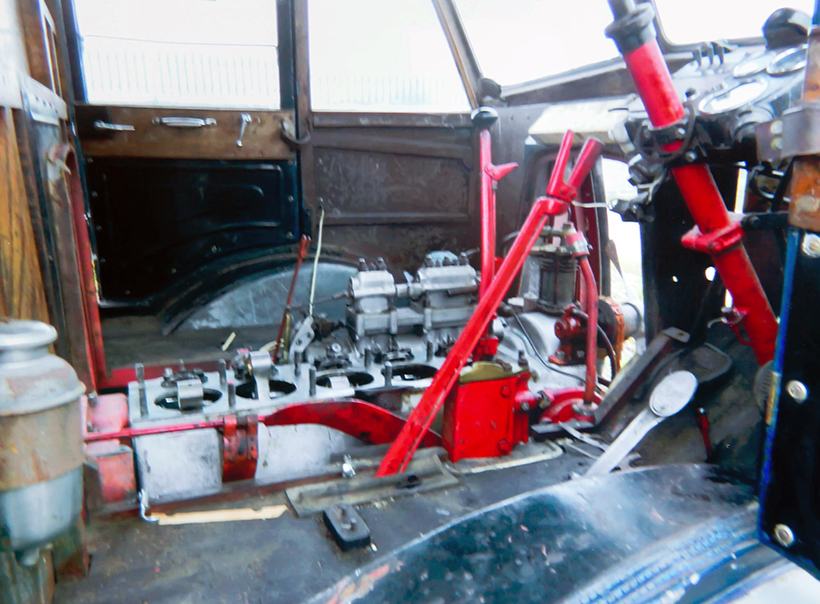
The engine had been assembled wrongly, and starting it caused significant damage to valves and pistons, all of which had to be renewed.
Five new pistons and 10 new valves were required. “The work was carried out with the help of Rob and Mike at Cotespark Commercials – a Foden agent in Alfreton – while Lewis overhauled the lift pump.” The result was that the engine came back to life. “It’s now in good working order,” Steve added. “Stephan and Lewis also checked and reassembled the gearbox after a careful condition assessment and, luckily, everything was OK.”
In addition, all the brake hubs and drums were removed and overhauled, together with the servo. The latter had apparently been added to the DG5 after it had been in service for a few years. “Whoever had done it didn’t quite get it square on the chassis,” Steve explained. “But I’ve left it as it is because it’s part of the vehicle’s history.” Also renewed were all the brake hoses and pipes, the handbrake cables and the trailer brake actuation valve, with all components being supplied by John Sanderson.
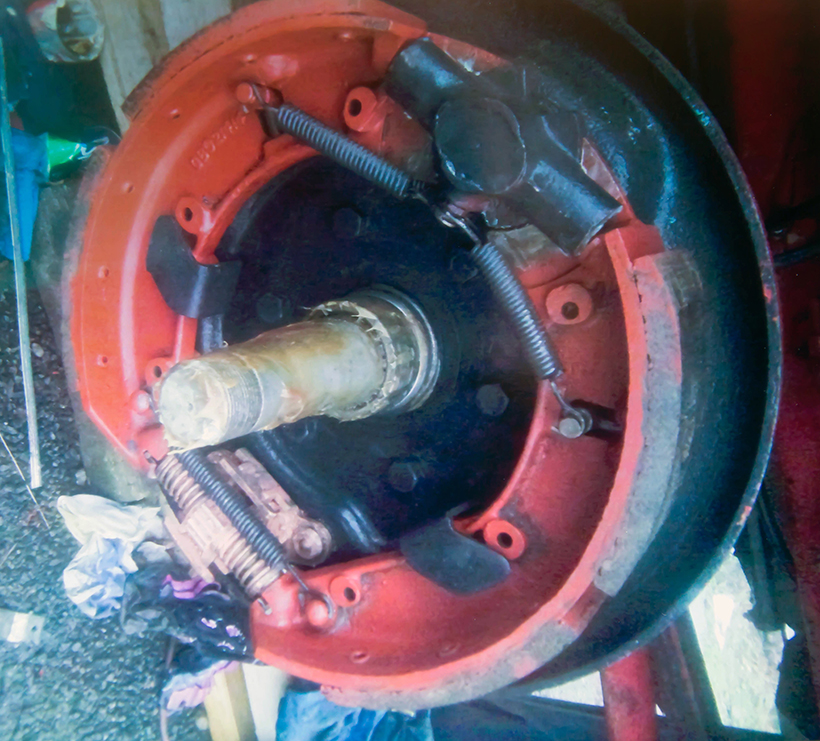
The braking system was worked right through, and almost everything was renewed.
The chassis itself was in good condition, and required only minor rust removal and painting. John Sanderson again came to the rescue with replacements for the missing chassis plates. The propshaft was removed and ‘re-aligned’, and one rear wheel bearing needed renewing. The fuel tank was also in good condition, although it was removed, cleaned and repainted, with fuel lines being replaced as required. The radiator, however, was leaking and needed repair.
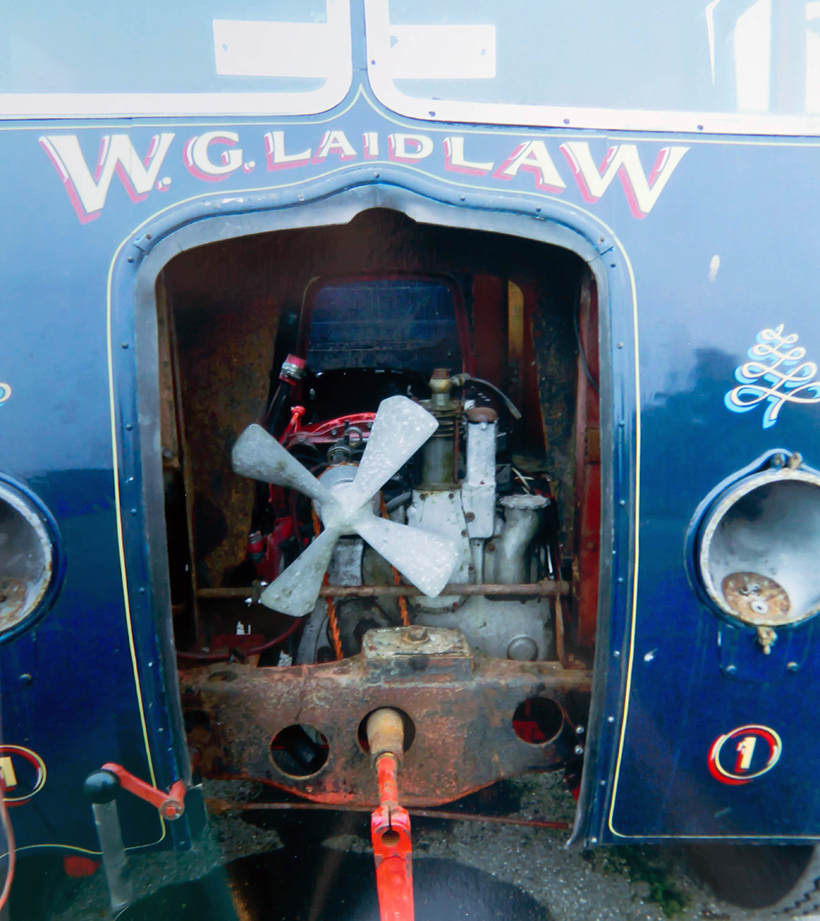
The radiator required significant renovation to remove leaks.
Dealing with the cab
Attention then turned to the cab which had, so far, remained on the chassis, but needed a lot of work. “All the interior plywood panels were renewed. We made patterns and cut out the replacements. Fortunately, the external panels were in generally good condition. The Luton body that it carried on the fairground probably helped to protect it, and the cab had been restored previously,” Steve continued.
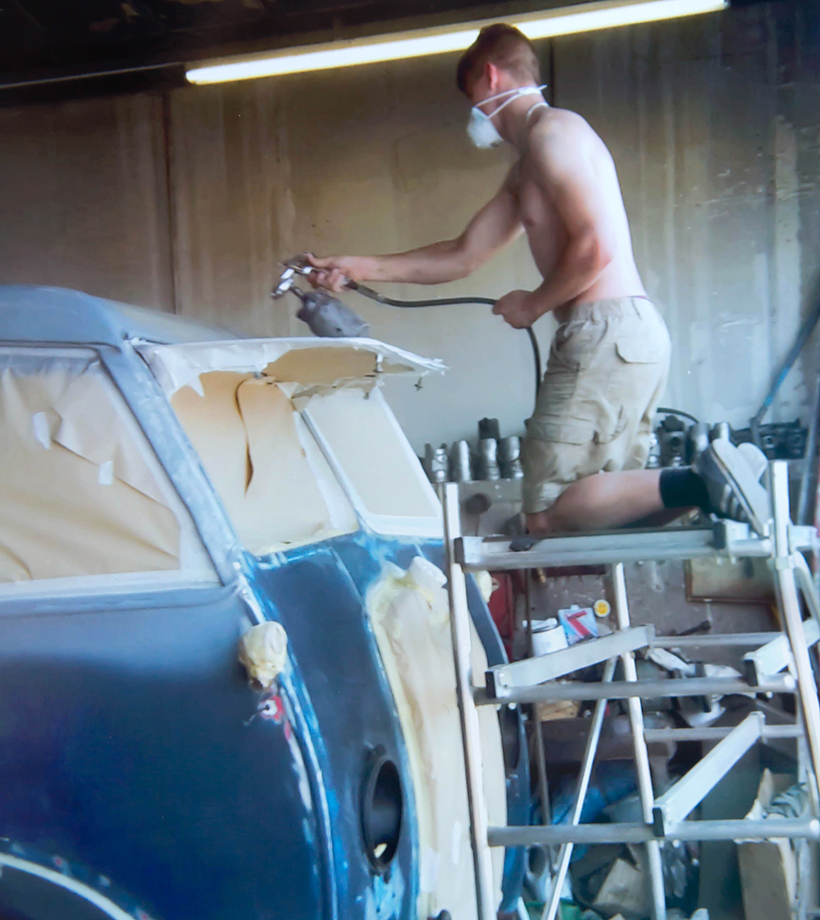
The chassis being primed on, by all accounts, a rather hot day. Not really the sort of protective clothing that we would recommend…
There were still some jobs to do though; the cab floorboards had to be renewed, and some joint beading needed re-sealing and re-fastening. Also, the nearside fixed windscreen was leaking, so that needed re-sealing, too. The front wings and rear mudguards were removed, blasted, painted and re-fitted as, indeed, were the rear mudguards. However, the offside door was beyond repair, so David Watts of Leicester made a new ash frame which ‘Paul from Shepshed’ re-sheeted in aluminium.
With that work completed, the cab was rubbed down and washed, ready for painting. Lewis primed it, and Darren Sentence, from Stocksbridge, applied three coats of undercoat, two coats of semi-gloss and two coats of coach paint. Then, to finish things off, Richard Mullard, of Ilkeston, did the signwriting.
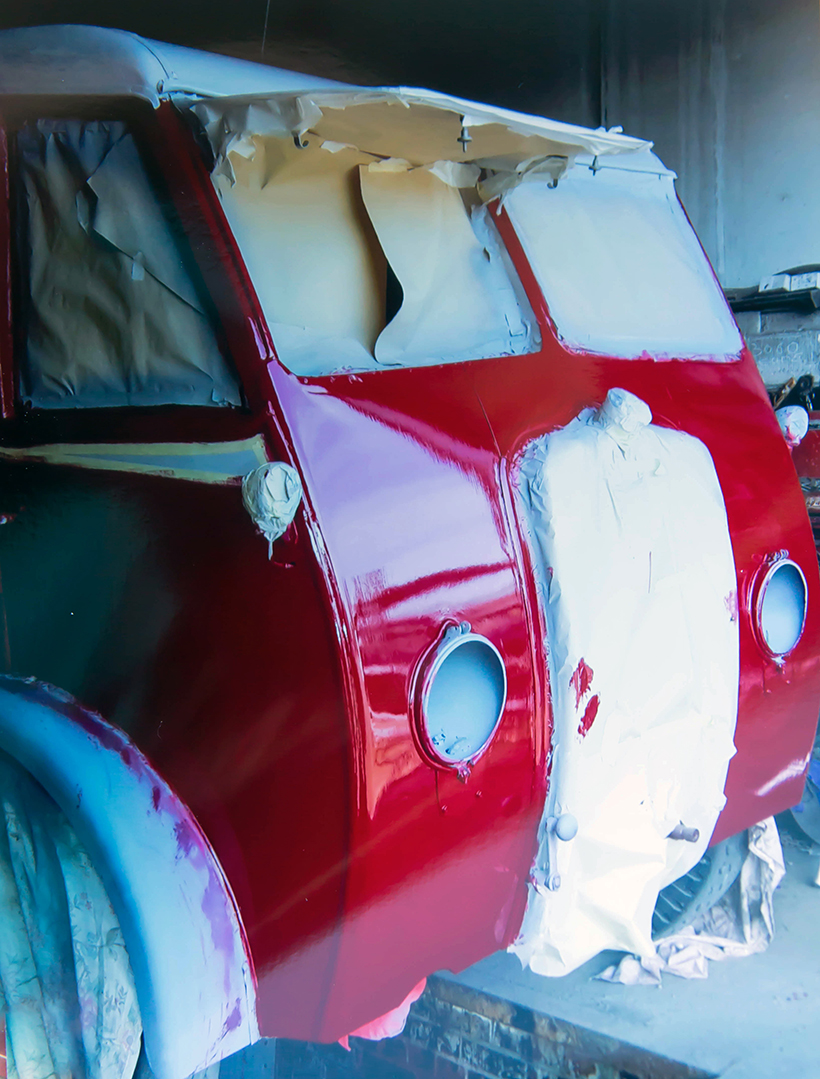
The colour coat going on.
The electrics presented another set of issues, with many components being missing and much else not reusable. A new wiring loom was needed, and items ‘not present’ included the dynamo regulator, the flasher unit and all lights, except the headlights. “We got the sidelights from Rob and Mike of Cotespark Commercials,” Steve confirmed. “Luckily, the instrument panel inside the cab was complete, but had to be re-furbished. It was re-wired, painted and polished up,” Steve added.
With the flat body being painted and re-fitted, the DG5 was just about ready to go back on the road. “Our aim was to take it on the 2018 Trans Pennine Run,” Steve recalls, “But we were running out of time.” It was a rush to get the Foden ready for the run. “The day before the event, we were still fitting the lights and radiator. We got it all finished at 7.30pm and, at 4.30am the following morning, set off for Birch Services, and the start of the run.”
The run itself was completed without any hitches. “We enjoyed, it apart from the four hours it took us to get home from Harrogate,” Steve added. “Maximum speed is 30mph, so we didn’t use the motorway, and took a route through Leeds, Wakefield, Sheffield, Chesterfield and Mansfield.”
The Foden’s second outing was to the Gardner Rally, in Stoke-on-Trent. This time, however, we ran into problems, “On the way back, the clutch started slipping. So we had to remove the body and dismantle the propshaft and gearbox. At first, no-one could see anything wrong with the clutch. But further investigation revealed that six springs hadn’t been fitted when the clutch had been re-conditioned. John I’Anson, of Barton on Humber, supplied a new set, and Stephan re-assembled the clutch and refitted the gearbox.
A lifetime with lorries
Road transport has been a part of Steve’s life since, at the age of 12, he ‘started getting involved’ with lorries at his Uncle Stan’s haulage yard at Selston, Nottinghamshire. “Along with my cousin, John Wright, I’ve been interested in classic and vintage lorries since childhood,” he explained. John’s father (also, of course, Steve’s uncle) owned SA&D Wright, which hauled coal throughout the United Kingdom. “The first vehicle that I drove was OMJ 954, an AEC Mercury,” Steve said, “when I was only 14 years old!”
At the age of 16, Steve began a four-year apprenticeship with Ford lorry dealership, East Midlands Truck Centre. “After that, I went lorry driving for a short time, driving a 1969 Albion Reiver hauling coal.” But after this initial period on the road, Steve worked more on the mechanical side of things. “I then went to work for Ennemix Ltd, as a commercial vehicle mechanic repairing concrete mixers. Then, in 1977, I moved to work for British Coal’s Road Transport Department, which became National Plant and Transport when it was privatised in 1988. His final employer, again as a mechanic, from 1991 until retirement in 2001, was Derbyshire County Council.
But it was while working for British Coal that Steve first thought about owning a vintage vehicle. “I liked the Atkinsons that they ran so, after I retired, I thought that I would like to own one for Stephan, Lewis and myself to enjoy. And things progressed from there.”
Coming up next
So what’s the next project for this family restoration team? “I have a Gardner 8LW engine that was originally fitted in an Automobiles Meisse, in Belgium. We’ll get that cleaned up and put on the back of the Foden DG5 for display purposes.” Also waiting in the wings is a Dyson four in-line trailer. “It’s a bit rough at the minute, but we’ll get it restored for the Foden to pull.”

A Dyson trailer has been bought to go with the Foden, once it’s been restored.
But the next lorry to be restored will be OFA 893H; a 1970 Scammell Handyman that was with Bass Charrington, at Burton-on-Trent. “It had been used latterly to power a grain blower,” Steve said. The reason that a Scammell Handyman is to be Steve’s next restoration project goes back to his time as a driver. “I passed my HGV test and the next day my Uncle Stan sent me to Newcastle in a Handyman, with a tandem-axle bulk tipping trailer, to collect a load of coke.”
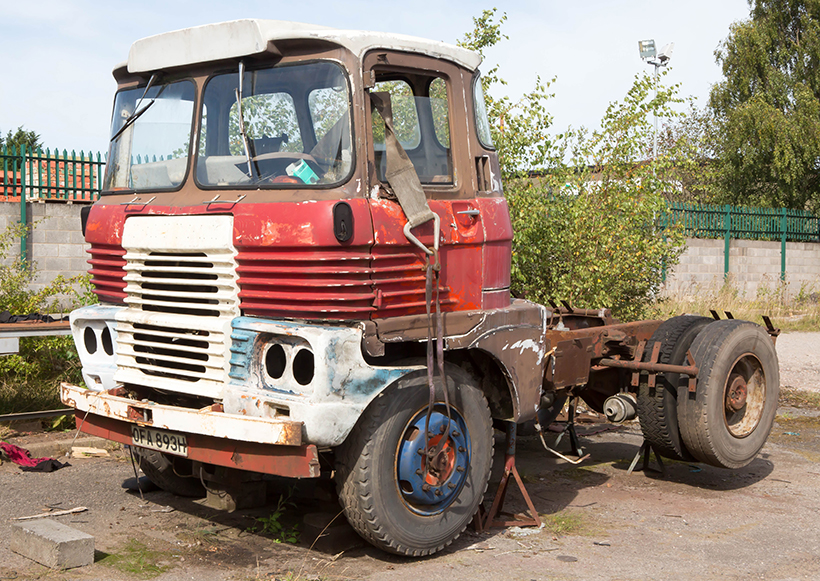
Steve’s next restoration will be this 1970 Scammell Handyman, which replicates the one drove to Newcastle the day after passing his HGV test.
But it’s Steve’s 1939 Foden that was the centre of attention on this visit, and you’re sure to see it out and about. “I’m a firm believer in using my lorries, I like to see them on the road.” Steve is also keen to keep his vehicles as original as possible, renewing parts only when there’s no reasonable alternative. “I have used as many old parts as possible; I don’t like restoring vehicles too much,” Steve said.
It’s certainly a vehicle that will get a lot of attention on the rally circuit, with Steve keen to pay tribute to Stephan, Lewis and his cousin, John Wright, for their involvement in the restoration. “They’ve all been part of a great team that’s got this old Foden back on the road,” he concluded.
To subscribe to Classic & Vintage Commercials magazine, simply click here
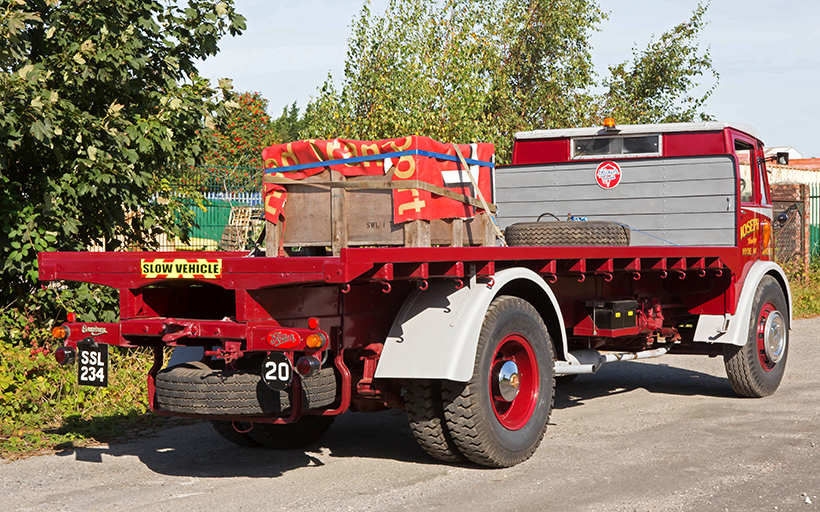

Previous Post
Great transport and industrial heritage reads to buy online

Next Post
A first class delivery!



